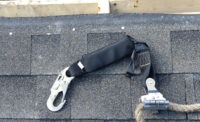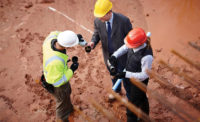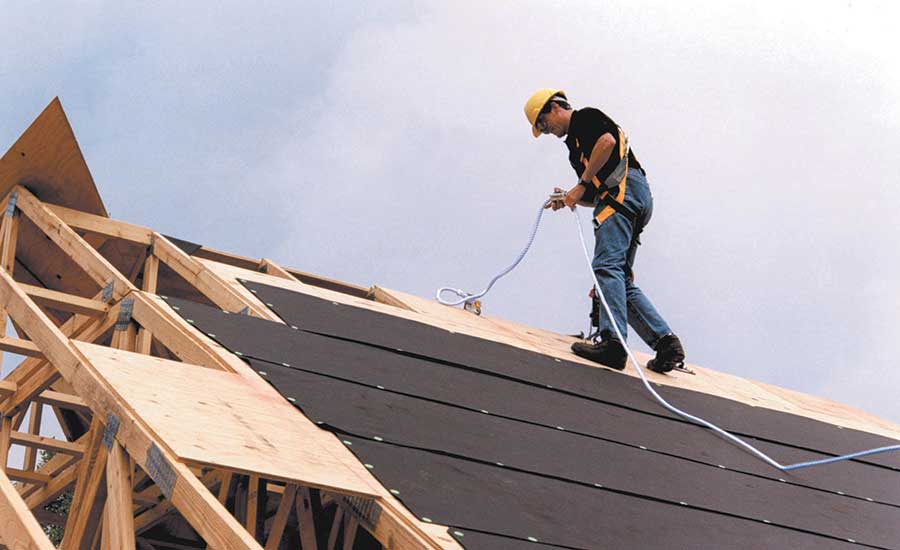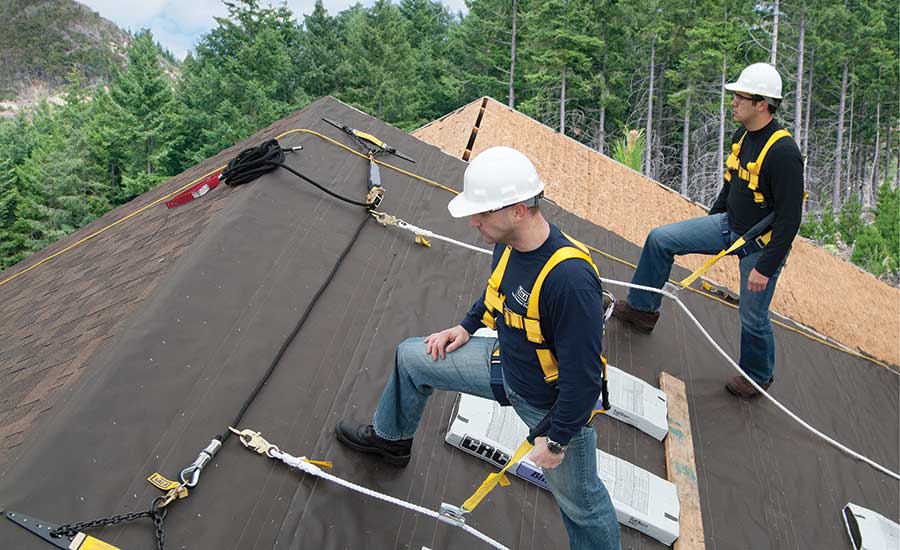12 Steps to Seeing Safety Risks on the Roofing Jobsite
There are critical clues on every site foreshadowing red-flag disaster that may or may not occur that day.
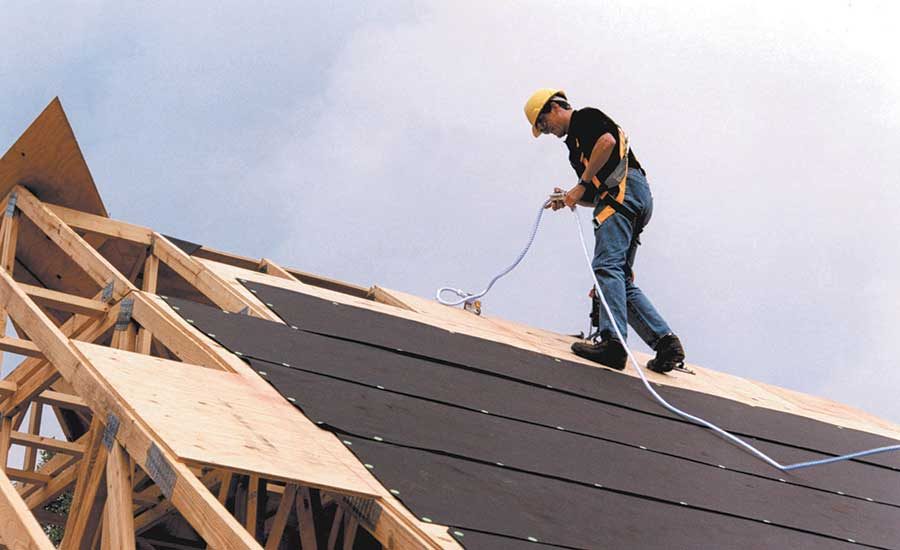
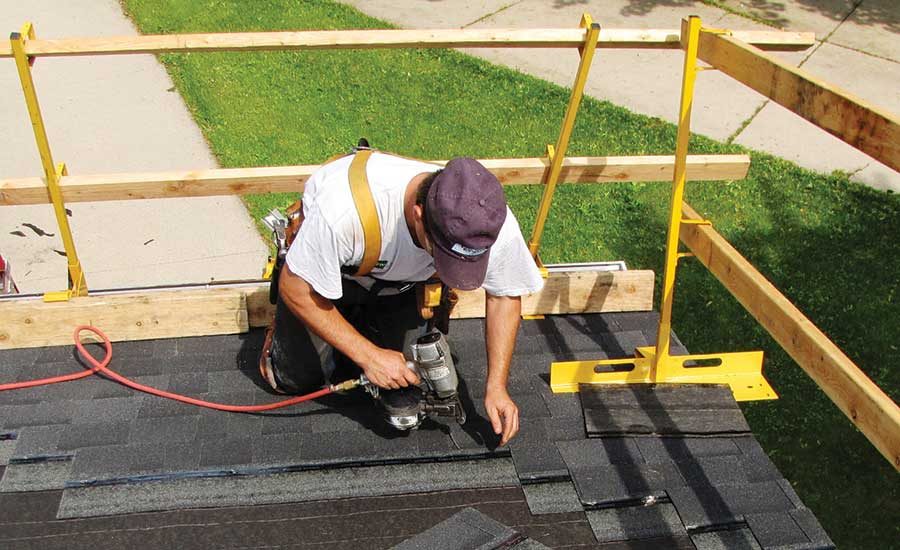
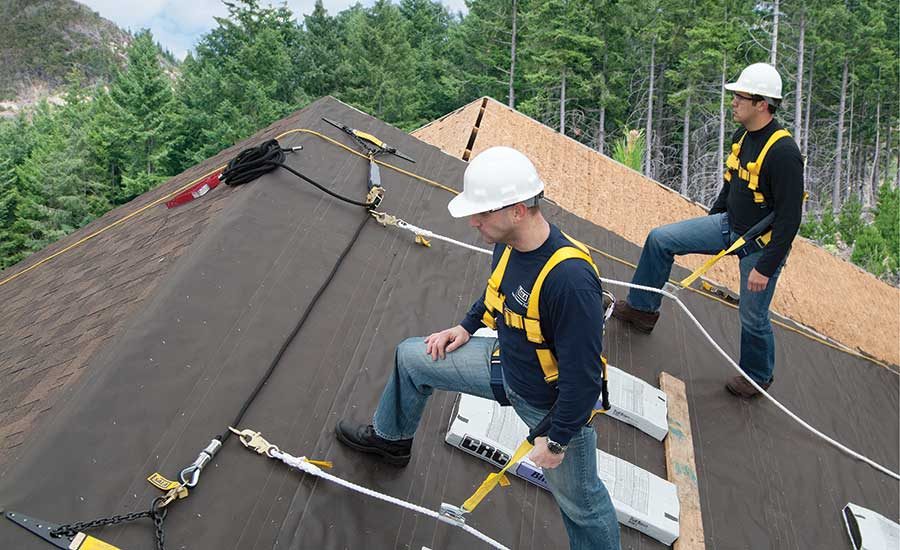



Whether it’s your sole assignment, or just one of many, the responsibility to audit implementation of your corporate Safety and Health Program (SHP) will require you to periodically abandon your desk, drive to some remote site, and walk/look/ask/sniff around. Any day may turn out to be the only day to spot injury, illness and death on the horizon.
While checklists can be important backstops to evaluate the effectiveness of a contractor’s SHP, they can’t frame the whole site safety picture where potential injury, illness and death lurk. Some warning stones should actually be turned over by hand on site every day workers are potentially exposed.
Construction and demolition sites are kinetic, with things blowing up or falling down around the clock. Thirty seconds in the field with your head buried in paperwork, or worse yet, a computer, can lead to a serious error-of-omission, not to mention a fall into a hole. When your attention is only on documenting, near-miss yellow flags fly by without notice. There are critical clues on every site portending red-flag disasters that may or may not occur that day. Rising fatality rates in the construction industry attest to the fact that construction/demolition projects require situational awareness training as a basic survival skill. Auditors are quite often lone workers, who must observe, act and verify on the move while simultaneously watching their own six. That level of awareness isn’t typical, unless you’re fresh from a war zone or retired CIA.
Safety auditing is a lot like knot tying: there are no experts, only dedicated practitioners. In my experience, a meaningful safety audit requires total engagement of the five primary senses, with a healthy dose of the sixth. Admittedly, I’m not perfect but the following 12 clues may suggest more about the general health and safety on your jobsite than any of the statistics or data projections could ever predict.
1. STORYBOARD AT THE GATE
Is there one? The front entrance to every work site makes an indelible first impression. It should have prominent, professional and attractive entry signage, listing the property owner and signatory contractors, their project managers, where to find them and emergency contact numbers. Mega projects should entail a site map with a “You Are Here” arrow. The storyboard should inform everyone who is about to enter the site of the potential risks on the other side of the chain link; and the appropriate minimum hazard control measures required to enter. Not only is the storyboard a legal fixture, but it also affords visitors the respect they deserve and are asked to return. Two bare signposts surrounded by trash and construction debris screams: “Nobody cares. Abandon hope here!”
2. ATTITUDE Barometer
Everyone can feel changes in air pressure. This is the same sensory observation. What’s the ratio of pride vs. rancor among the rank-and-file? A safety mentor once described his perception approaching an unsafe site as: “The stench of gunpowder after battle.” Bring doughnuts and coffee to the group and let the conversation flow. Encourage discussion, but don’t lead it. Listen to the tales heard around the “roach coach.” It’s not hard to spot the bullies and their victims on jobs with weak site safety management, particularly when no one expects anyone to look for an aggressive journeyman stalking the younger apprentice lacking confidence. The construction trades harbor the same percentage of bigots, misogynists, bullies and harassers as bankers, lawyers and government, but their camouflage is substantially thinner. Individual aggression levels may rise in a self-defense posture and fewer helping hands reach out to coworkers than normally expected. The practical jokes and horseplay, for which construction workers are unfortunately stigmatized, take on a noticeably sharper edge when workers don’t feel respected or supported by middle or upper management.
3. GENERAL HOUSEKEEPING
This never fails: walk along the perimeter fence and measure the high tideline of trash hanging in the cyclone fence. If the bright colors of the candy wrappers have faded, it has been accumulating for months. It’s easy to sweep the steps of the trailer, but it’s harder to tend the entire site as if it were your mother’s front yard. Every job site is a company business card. When no time or effort is committed on simple housekeeping chores, what chance does a more complicated safety and health policy have? Consider the cleanliness of your work sites to be the barometer of a safe work culture. The more debris, the sooner the next accident.
4. ATTENDANCE
No-shows and sick calls normally become more prevalent as the job enters its third quarter when management focuses primarily on schedule and budget. The site-wide energy level naturally diminishes from day one, but after a serious fatal or non-fatal accident, a schedule without cushion or a middle management without empathy tends to deflate crew loyalty fast. Billable hours start to decline and project landmarks are more readily missed by short-handed crews. A healthy crew exhibiting safe work behavior will adjust to almost any challenge if it feels management is their partner. Desperation hiring and doubling up the workload on survivors of a busted budget and blown schedule may lead to other costly delays. If management has failed to develop a meaningful, two-way safety culture midpoint in a project, the drag of the third quarter will inevitably induce injuries and drop attendance in the fourth. When workers can’t trust management’s ability to watch their backs as the schedule winds down and the budget drains, they tend to lose core optimism and pride in workmanship.
5. TOOL CONDITONS
Tool replacement is not only the cost of doing business but a way of life. If the Conex box housing all of the rigging looks like it’s been around the world twice in a circus, you can bet the gear inside is just as beat. Pride in workmanship and your tools always reflects a pride in working safely. If the newest welding kits were initially purchased on a bid three jobs prior, but its maintenance was ignored and/or replacement costs were not added in subsequent bids, welders will still be expected to work safely and productively with deteriorated or junk tools. Skilled safety managers should actively manage. Hand and power tools should be maintained in their “condition of manufacture.” Given the lethal potential of an electrical shock, severely damaged lead chords and pigtails illustrate the lack of competent safety management on the job. They may foretell the fast approach of injuries and possibly death. Tools never lie about their owners.
6. EQUIPMENT MANAGEMENT
Maintain equipment or repair/replace it. Daily and periodic equipment inspections should be married to the employer’s preventative maintenance program. Many operators are pressed into unreasonable, blood-from-stone production schedules. If the equipment has not already been tagged “out-of-service,” they may conclude it must have passed inspection on the previous shift and may be reasonably capable of another. That old “assume” principle often becomes SOP. Evaluate the operator’s basic knowledge of the OSHA standards. Ask the forklift operator if he could check the hydraulic and transmission fluid levels while you watch, or ask about the manufacturer’s recommended summer tire pressure. How comfortable and accurate is the response? It’s a given that the schedule is tight, but how does the foreman plan to safely gain lost ground every shift? Shortcuts are likely to become solutions. Like hand and power tools, clean and regularly maintained equipment illustrates a pride in workmanship, a first cousin to safe work practices. Is the control cab littered with half-eaten lunch and racing forms? Are all the manufacturer’s literature warning labels, load charts and placards still in place? Is a copy of the operator’s manual in the waterproof container from the manufacturer? Has the operator been competently trained in the function and controls of this particular model? Have they received annual refresher training and been evaluated since their initial training, or were they trained years prior by another employer in an entirely different machine?
7. ACCIDENT & NEAR-MISS REPORTS
The question here is not whether or not such documents literally exist, but rather are they professionally and completely filed? Have they been competently analyzed for direct and root causes? Has employee training been upgraded and refresh accordingly? Has the SHP been revised by the employer to prevent any further injury or loss? The preservation of any and all material evidence on site is critical to the analysis of an accident and prevention of the next one. In any criminal accident investigation on site, making evidence “disappear” by request or order of another may be viewed as a conspiracy to obstruct justice. Putting the ladder on the burn pile after the worker fell and died, will not help anyone else in the future. The vast majority of contractor’s accident and near-miss reports I’ve read over my career lack sufficient details or logical sequence necessary to reconstruct the pre-events and therefore prevent the same accident from happening in the same way again tomorrow. Incomplete or falsified documents may be meaningless in themselves, but are indicative of incompetent safety management at all levels. Beware of management offering safety incentives to employees filing fewer accident/near-miss reports.
8. EMPLOYEE INPUT
What’s the level of employee-involvement in their own health and safety program? Ask anyone (other than the foreman): “When was the last time your employer asked for your opinion about his company?” Employers who hire workers only for what’s below their shoulders, are missing out on a free opportunity to improve their position in a competitive marketplace that inspects safety records. Employees who are capable of improving their own safety and health policy are often more willing to be loyal to management.
9. TROUBLESHOOTING
It’s the responsibility of the Competent Person (CP) to observe, act and verify and the Qualified Person (QP) to solve and resolve problems on site. Have months gone by since anyone asked either of them anything? Asking questions and doubting those quick, two-word answers is the mark of an experienced tradesperson. Is the employer-designated CP consistently being challenged by his/her inferior knowledge or lack of experience in the task or subject matter? It shouldn’t be all that uncommon for a CP to answer a coworker’s difficult question with: “I don’t actually know the answer to that, but I will research it and get back to you ASAP.” Nothing should get in the way of giving a correct answer to a work-related safety question. Everyone’s health and safety becomes jeopardized if the CP chosen by the employer is actually incompetent.
10. COMMUNICATION
The Job Safety Analysis (JSA) and its many variants, should be the keystone around labor-management communication before projects, tasks and shifts even begin. Today everyone on the job should be thoroughly trained in the function and purpose of a JSA and/or a Safety Implementation Plan (SIP). Does everyone contribute to the itemization of existing and potential hazards in every step of the job? Do workers file straight through the job trailer each morning, signing acknowledgement forms without reading that day’s JSA or SIP and discussing its impact on their work? The original JSA was conducted pre-bid while the second edition is revised upon contract award. Are further JSA’s clearly landmarked with regularity throughout the project schedule? Are weekly project schedules reviewed with the crews? Has a CP been designated to oversee the JSA and regularly verify hazards and controls? Has the CP conducted one or more Risk Assessment Matrix (probability vs. severity) for every step of the job? Is everyone trained and experienced to meet or exceed the next task’s risk assessment before work begins?
11. EMPLOYEE PARTICIPATION
As important as evidence can appear, the lack of that evidence can be just as telling. Has every employee been supplied and trained in the employer’s written Safety and Health Program in the first month of their employment and prior to being exposed to potentially dangerous acts and conditions? Has every employee recieved their own updated copy? To put it simply: Is the employer’s workplace safety and health policy an easily accessed, two-way road in good travel condition?
12. INTUITION
Despite the 50-50 coin flip of unknown outcomes, research studies have shown when something doesn’t “feel right,” it actually isn’t almost two-thirds of the time. If conditions require shutting down the jobsite until it actually feels right, is that course of action supported by middle management? Safety and health should never be the caboose at the end of the corporate train, but rather the eight wheels underneath every car. If you even suspect you heard a complaint from just one of them, stop the train and investigate, repair and verify the repairs are effective every time. All that an employee should have to tell you is “Something doesn’t feel right, boss,” and your first response should be “OK. Let’s go find it.” If that sort of instinctual interaction is discouraged, it will be as noticeable as a skunk in the dark. After all, it’s better to evacuate everyone during 100 false alarms than attend one funeral.
Looking for a reprint of this article?
From high-res PDFs to custom plaques, order your copy today!





